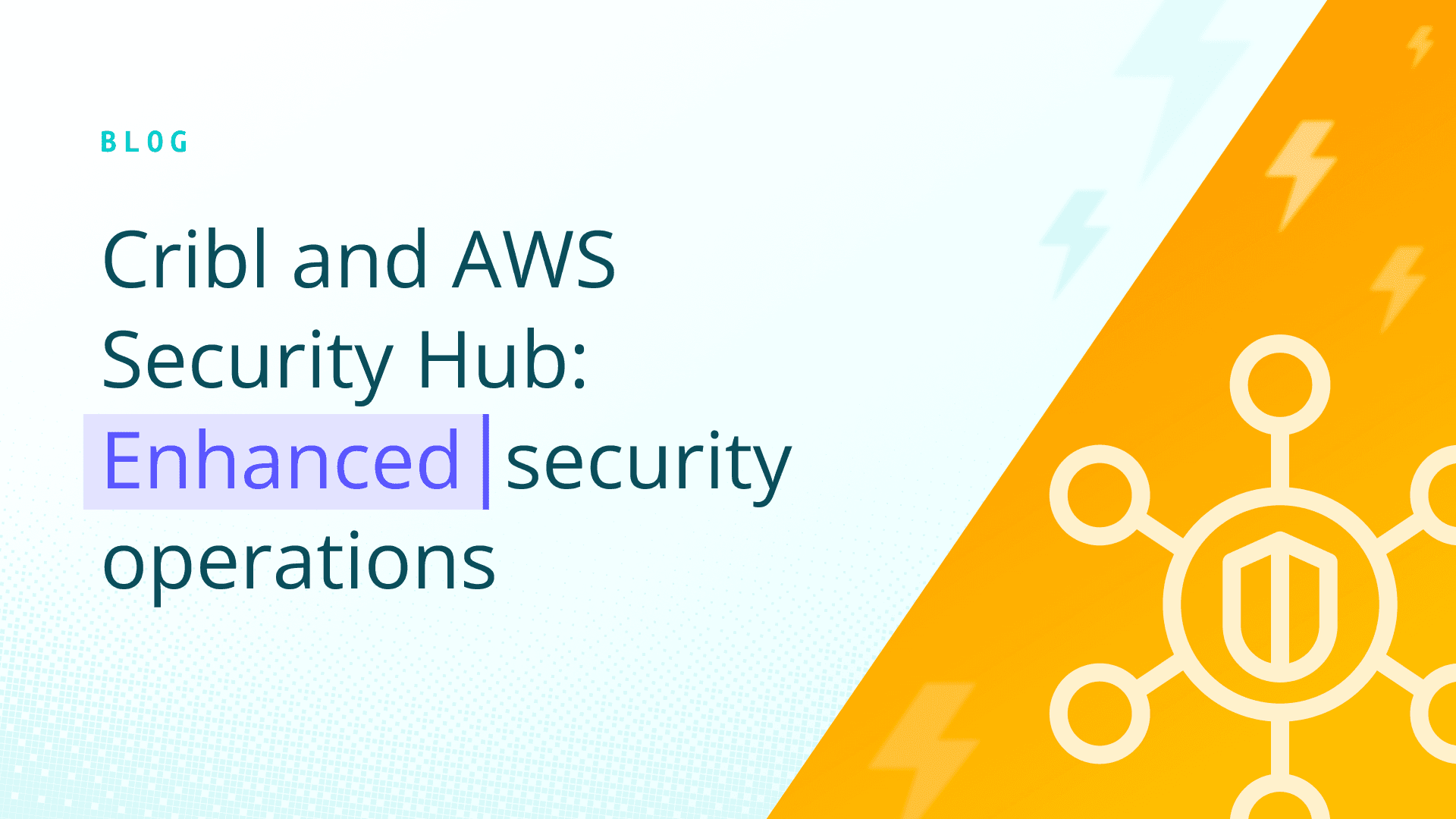In my last post, Your Buckets, Your Rules: How to Configure BYOS with Cribl Lake, we explored how Bring Your Own Storage (BYOS) empowers you to retain full control of your data while gaining the flexibility and performance of a modern data lake. It stays true to our core at Cribl, giving our customers the choice, control, and flexibility they deserve. Your data should stay under your governance, with open access to the tools that help you extract value from it.
For this blog, I want to dig deeper into one critical aspect of that model — data residency. Specifically, how organizations can meet regional and compliance requirements while maintaining unified control and visibility, all managed from Cribl.Cloud. We’ll look at a real-world example and show how multi-region Amazon S3 buckets can be integrated with a single Cribl.Cloud Organization, and what this architecture looks like in practice.
Data Ownership: More Than a Buzzword
When I say "data ownership," I'm talking about something concrete. With BYOS, your data never leaves your AWS account. It sits in Amazon S3 buckets you provision and control. We help you manage encryption, how your data is organized, and its lifecycle rules while you set security policies. Cribl Lake acts as an abstraction layer that provides unified access and management — but the data itself? That's yours, period.
This isn't just about legal ownership. It's about operational control. You can access that data through Cribl Search, replay it with Cribl Stream, or query it directly with any Amazon S3-compatible tool. You're never locked into our platform or anyone else's.
No vendor lock-in, ever. We store everything in open formats. If you decide to move on from Cribl tomorrow (though I'd hate to see you go!), your data is still there, still accessible, still in formats that any modern analytics tool can read.
This matters because I've seen too many organizations get trapped in proprietary systems where their data becomes hostage. You end up paying inflated costs just to access what's already yours. That's not how we work.
Flexibility Across Clouds and Regions
Here's where BYOS gets really interesting from an architecture perspective. You can map multiple Amazon S3 buckets across different regions and accounts, and Cribl Lake federates access to them through a single pane of glass.
Let's say your organization operates globally with strict data residency requirements. Your European customers' data must remain within the EU to comply with GDPR. Your US data needs to stay stateside. And maybe you've got APAC requirements as well.
With Cribl Lake BYOS, you create Amazon S3 buckets in:
eu-central-1 (Frankfurt) for European data
us-west-2 (Oregon) for US West Coast operations
us-east-2 (Ohio) for the US East Coast
ap-southeast-2 (Sydney) for Asia-Pacific
Each bucket stores telemetry data in accordance with local regulations, your data-residency rules, and proximity to data sources for optimal performance. But here's the powerful part: you manage all of these distributed storage locations through the Cribl Lake management console.
Your primary Cribl control plane could be located in us-east-1, providing a centralized view of your entire data infrastructure. From that single Organization, you configure Cribl Lake Storage Locations and Datasets that map to each of your regional S3 buckets. Data never moves from its home region. European data stays in Frankfurt. APAC data stays in Sydney. But you get unified visibility, governance, and search capabilities across all of it.
Here's how this looks in practice:

By integrating your S3 storage with Cribl Lake, your team experiences:
Compliance Made Simple: Security and compliance teams can prove in audits exactly where data lives. EU data never leaves EU regions. APAC data stays in APAC. You satisfy data residency requirements while maintaining operational efficiency.
Centralized Governance: You don't need separate management interfaces for each region. Define retention policies, access controls, and data governance rules once in your Cribl.Cloud org, and they apply consistently across all S3 Storage Locations.
Unified Search: This is where the real power shows up. Your security analyst in the US can search for threats across all regions simultaneously through Cribl Search — without any data leaving its home region. Queries are federated out to each storage location, results are aggregated, and analysts get a comprehensive view without violating data residency requirements.
Operational Flexibility: IT teams aren't managing separate systems for each region. One Cribl.Cloud organization. One interface. Consistent policies and access controls everywhere. But data stays exactly where regulations require it.
Cost Optimization: You're not duplicating data across regions for accessibility. You're not paying for cross-region data transfer. Data lives in the most cost-effective region for your use case, and Cribl provides the access layer.
Search in Place: The Single Source of Truth
Here's where Cribl Lake BYOS really shines operationally. With Cribl Search, you get search-in-place capabilities across all your S3 Storage Locations. No data movement. No additional pipelines. No rehydration delays.
Think about traditional approaches: you collect data, move it to a SIEM or data warehouse, then query it there. But what about historical data? You archive it, and when you need it months later for an investigation, you wait hours or days for rehydration jobs to complete. Then you pay again to ingest it back into your analysis tools.
Cribl Search eliminates all of that!
Your telemetry data lands in your S3 buckets in the right formats—application logs, security events, metrics — whatever you're collecting with Cribl Stream and Cribl Edge. It's immediately searchable through Cribl Search. No wait time. No data movement. You point Search at your BYOS datasets, write your query, and get results.
I've Got 99 Problems, but My Schema Ain't One...
Thinking of building your own security data lake? The traditional approach to data lakes requires extensive pipelines. Extract data from sources, transform it into specific schemas, load it into storage, then transform it again when you need to analyze it. Every transformation introduces latency, complexity, and opportunities for errors.
Cribl Lake uses a schema-on-need architecture instead. You ingest data in its original format — no predefined schema required. Store it as-is. When you need to query or replay that data, Cribl Search can apply transformations at query time, depending on how you're using it.
Want to send specific events to your SIEM for investigation? Cribl Search finds them, and Cribl Stream shapes them into the format your SIEM expects — in flight, as you forward them. No permanent transformation. No duplicated storage. The source data in S3 remains unchanged.
This is massively more efficient than traditional workflows. You're not processing data you might never use. You're not maintaining complex pipelines that break when data formats change. You shape data only when you need it, in the format you need it, for the destination you're sending it to.
Getting Started
Setting up this multi-region BYOS architecture is straightforward:
Deploy your Cribl.Cloud Organization in your preferred Region (e.g., US-East-1)
Create S3 buckets in each Region where you need data residency – we provide CloudFormation templates to make this quick and easy
Add Storage Locations in Cribl Lake, mapping each to its regional bucket
Create Datasets that reference your BYOS Storage Locations
Configure Cribl Stream or Edge to route data to the appropriate regional Datasets based on your data classification rules
Start searching across all locations with Cribl Search
The whole process takes less than an hour. Our CloudFormation templates correctly handle IAM policies and cross-account access. You're following AWS security best practices out of the box.
Why This Matters
The data landscape has fundamentally changed. Regulatory requirements are getting stricter. Data volumes are exploding. Budgets aren't keeping pace. Organizations need architectures that provide control, compliance, and cost-efficiency simultaneously.
You're no longer choosing between compliance and capability. With Cribl, you get both.
Bring your own storage. Stay compliant. Stay in control.






